Flighted Spongy Moth Complex
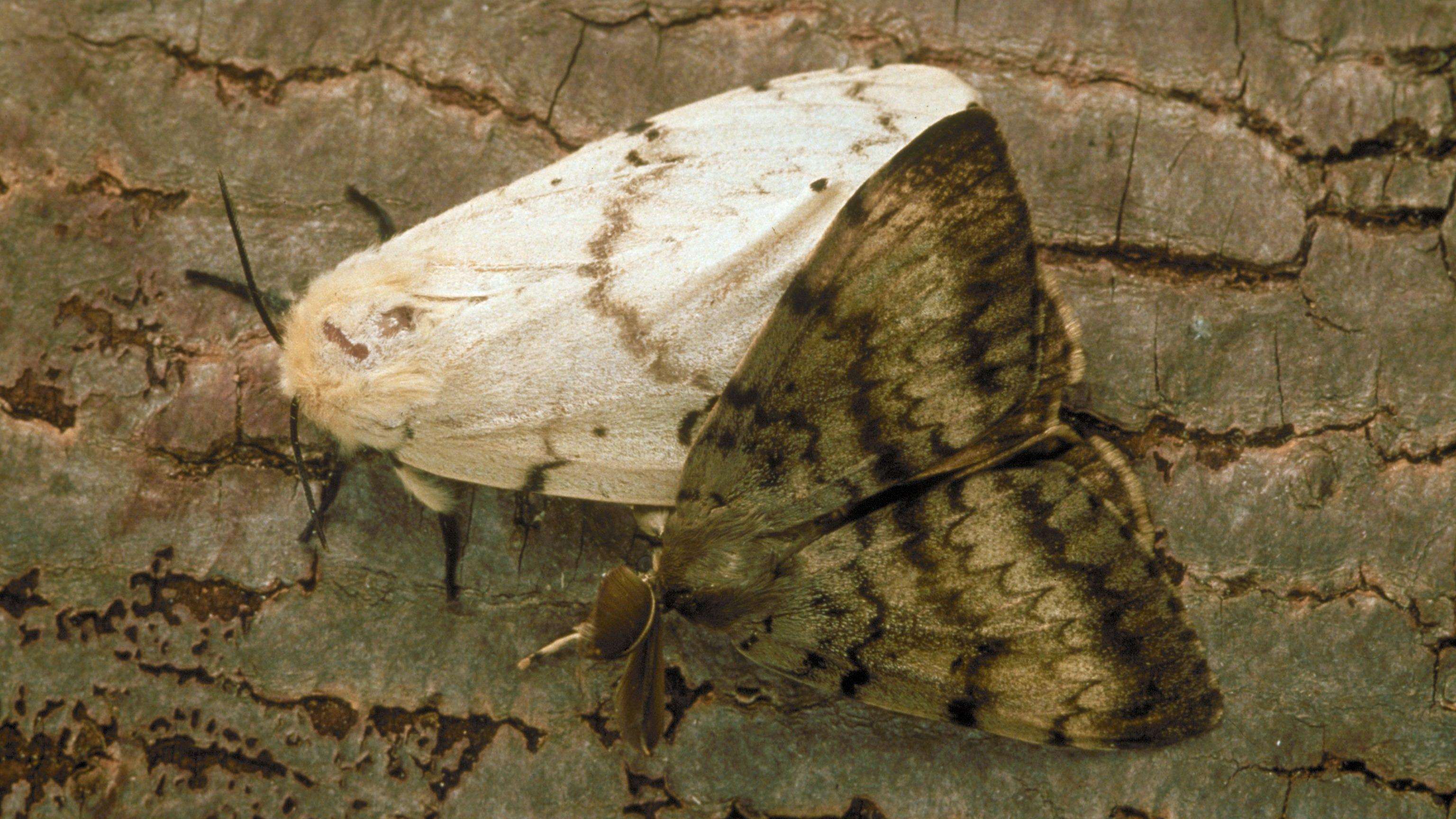
Flighted spongy moth complex (FSMC) is a group of exotic pests native to Asia. It includes Lymantria dispar asiatica, L. d. japonica, L. albescens, L. umbrosa, and L. postalba. APHIS works closely with several foreign governments to inspect and certify that ships are free of this pest before they leave Asia and when they arrive in North America. We also survey areas around ports of entry to make sure the pest isn't introduced into this country.
FSMC is similar to the spongy moth but has a much broader host range. Female moths can fly and disperse rapidly if left unchecked. Heavy infestations can strip trees and shrubs of leaves, leading to the death and decline of forests, orchards, and landscapes. A flighted spongy moth complex introduction into the United States would pose a major threat to North American trees.
Egg masses
- Female moths fly at night and are attracted to lights. In port environments, they will lay egg masses on ships. Outside of port environments, female moths lay egg masses on tree trunks, limbs, and leaves, as well as on stones, walls, logs, lawn furniture, and other outdoor objects.
- Each egg mass contains up to 1,000 eggs and is covered with buff or yellowish fuzz. Egg masses can survive long distance transit on ships and cargo.
- Egg masses are about 1-1/2 inches long and 3/4-inch wide on average but can be as small as a dime. On ships, egg masses can strongly resemble rust spots.
Caterpillars
- Newly hatched caterpillars, capable of airborne dispersal (balloon) using silk, are carried on air currents away from the hatching site. This life stage is about 1/8-inch long and brown in color.
- Mature caterpillars are usually a mottled dark gray color but can vary from yellow to black. They have two rows of blue and red spots on their backs.
- They may range from 2 to 3-1/2 inches long when fully grown.
Adult moths
- Adult moths are attracted to outdoor lighting and most active at dusk.
- Male moths have grayish-brown wings and a wingspan of 1-1/2 inches.
- Female moths are white and larger, with wingspans of up to 3-1/2 inches.
FSMC life stages look almost identical to spongy moth life stages. To tell them apart, a DNA test may be needed. Contact Federal or State agriculture officials if you suspect FSMC.
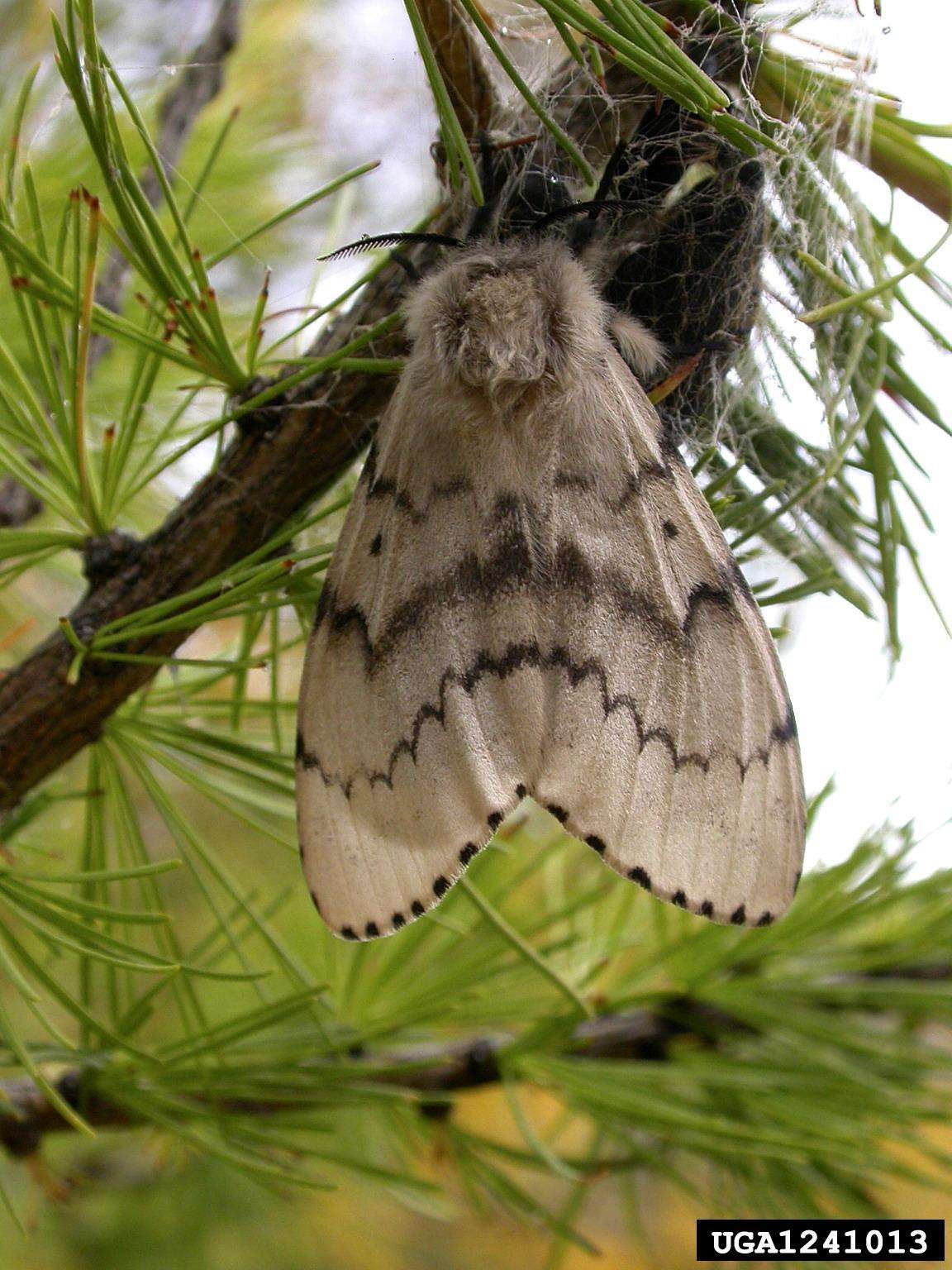
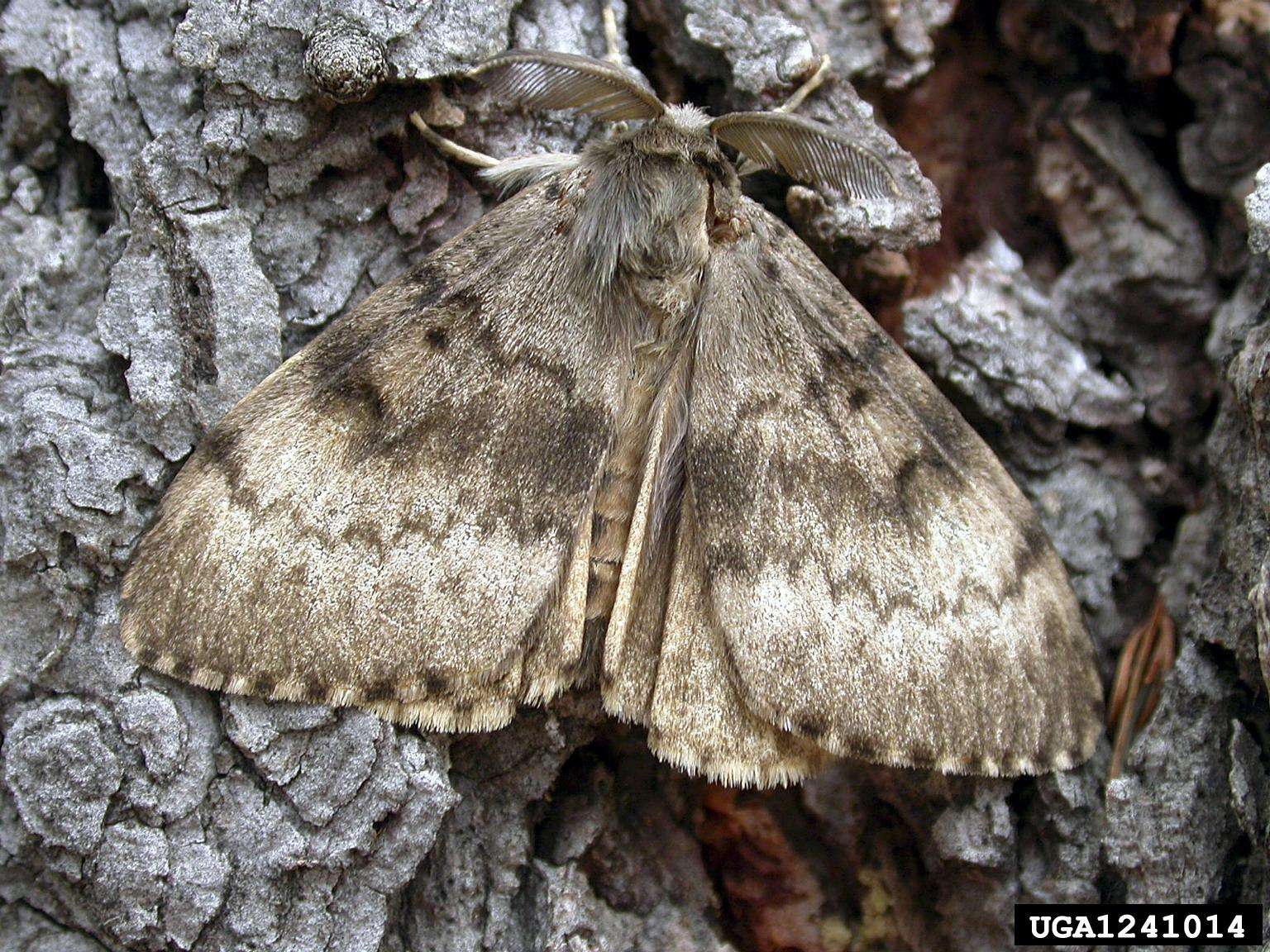
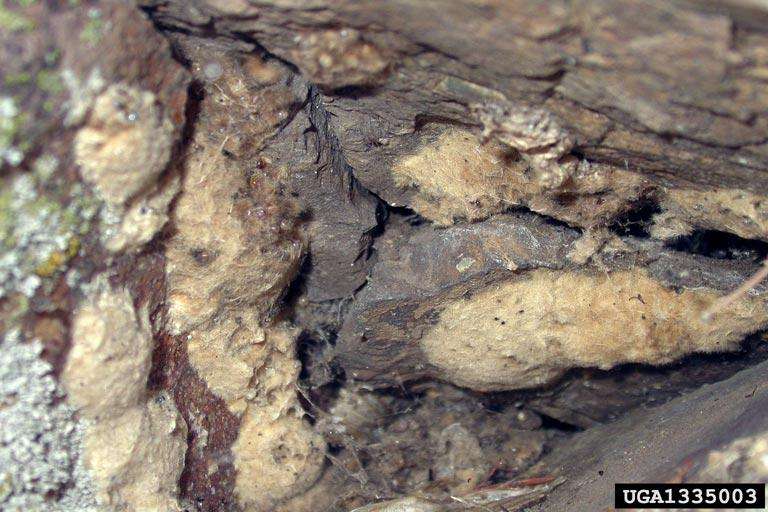
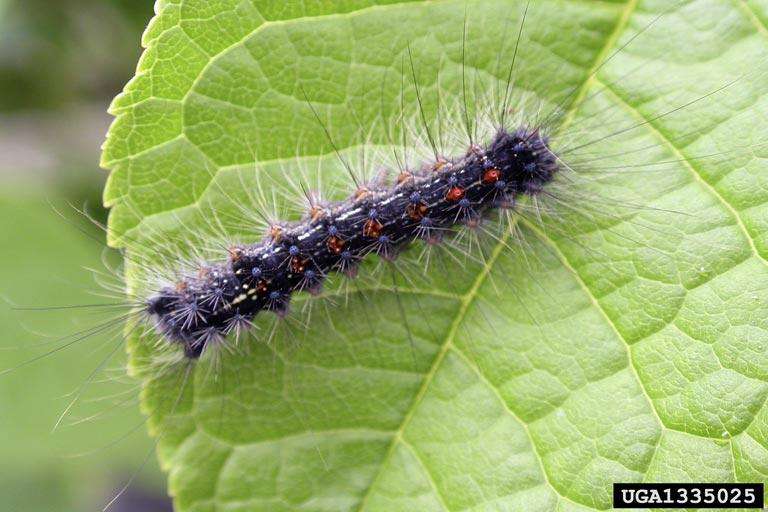
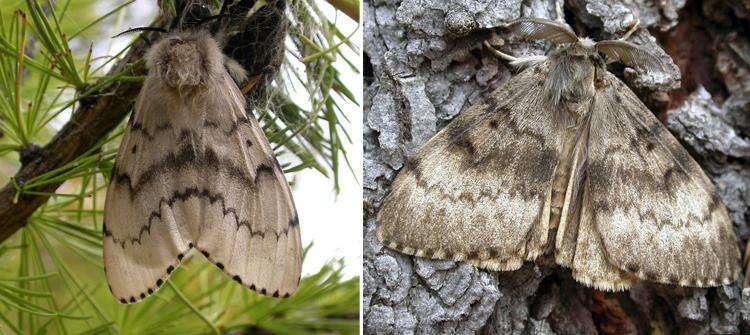
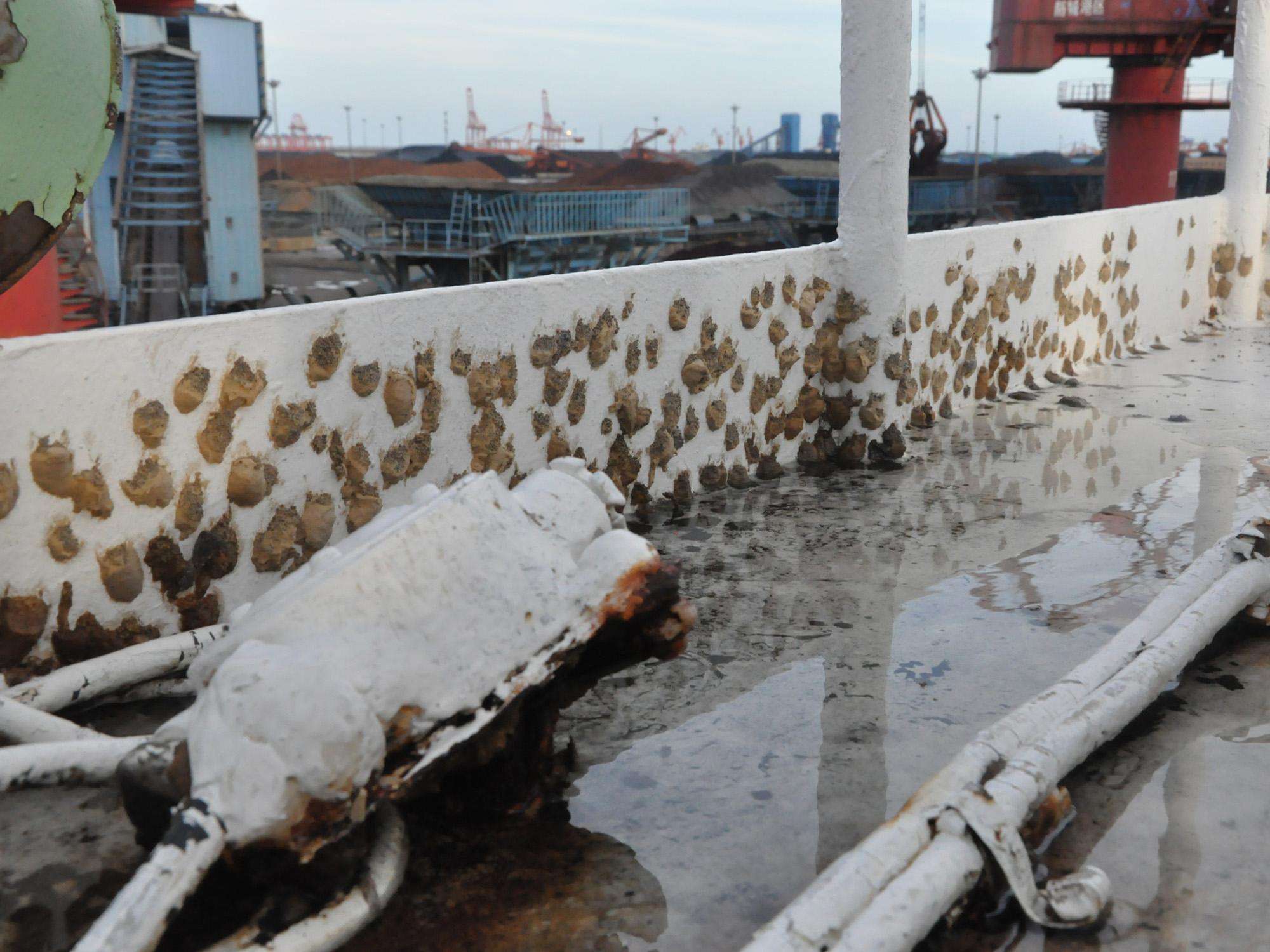
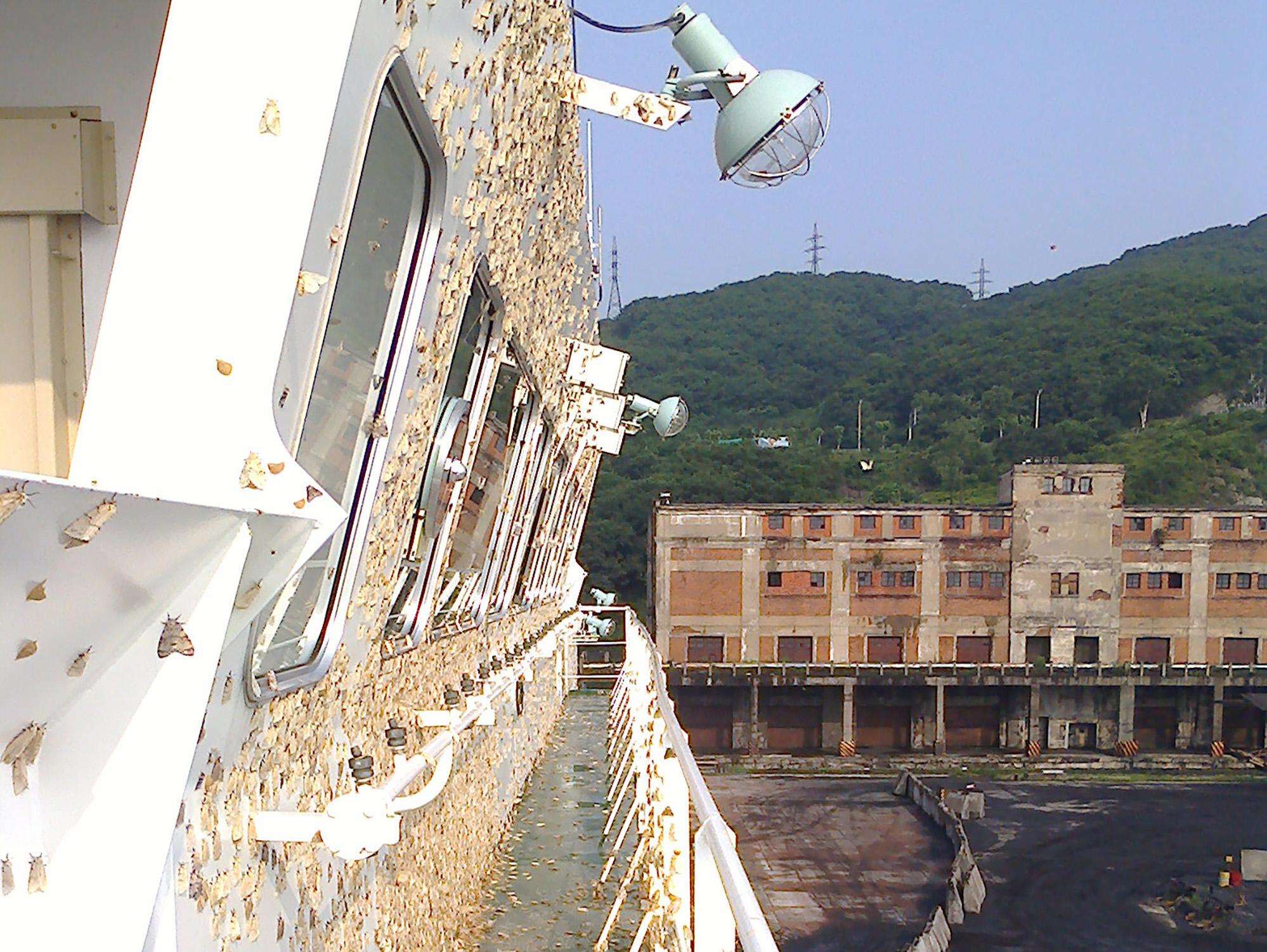
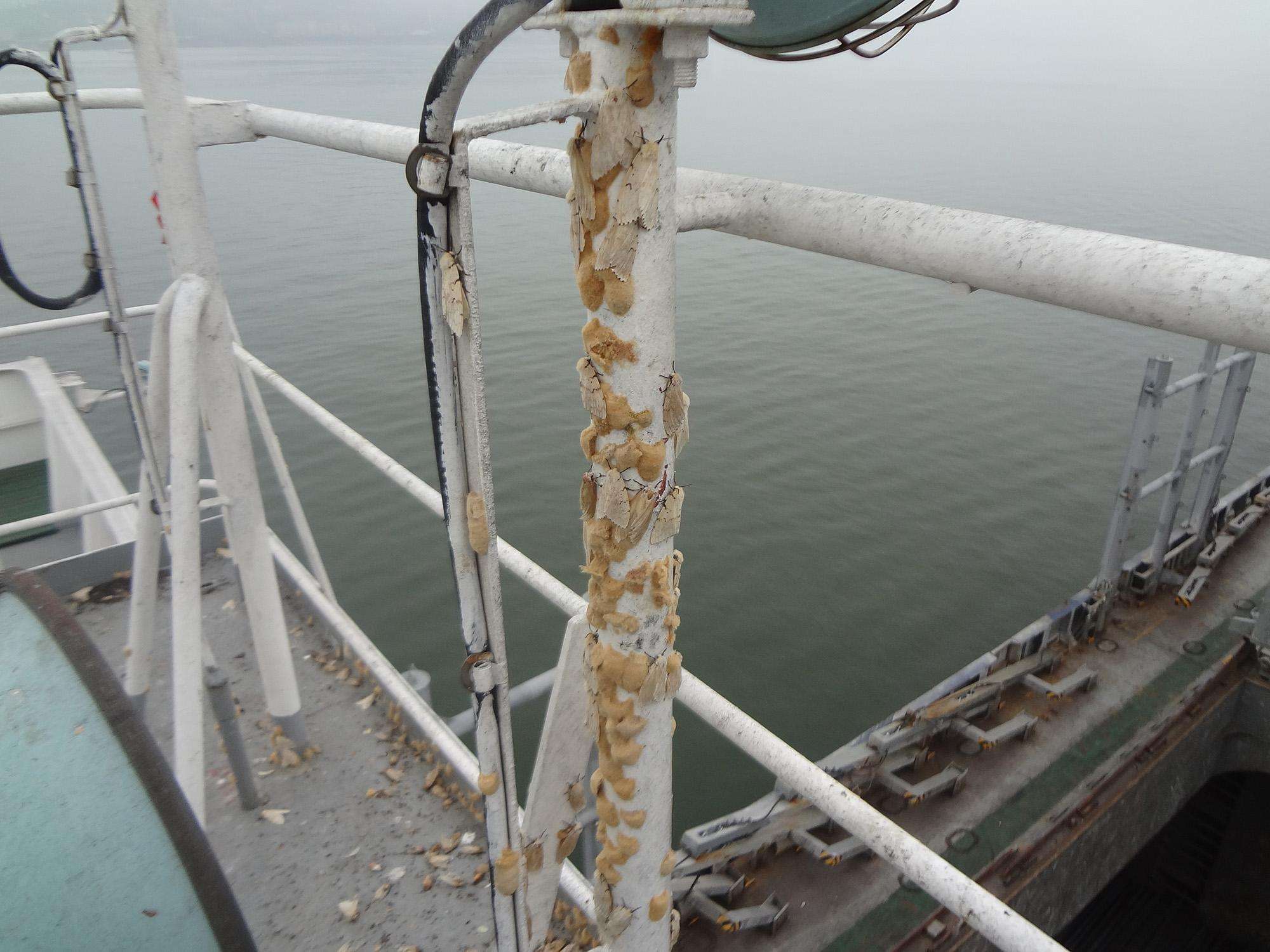
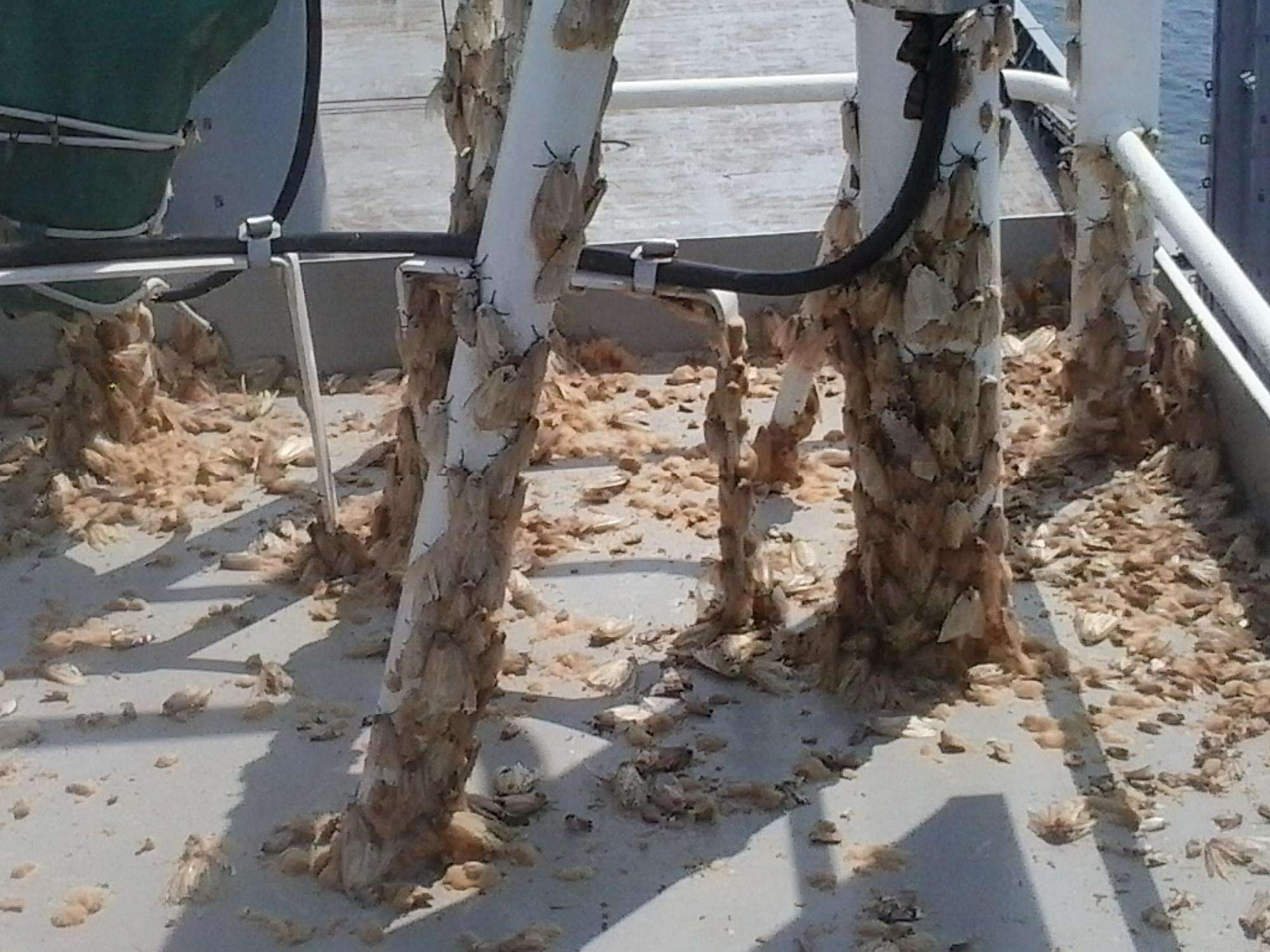
Adult Female Flighted Spongy Moth Complex, USDA Photo by John H. Ghent, USDA Forest Service, Bugwood.org
Adult Male Flighted Spongy Moth, USDA Photo by John H. Ghent, USDA Forest Service, Bugwood.org
Flighted Spongy Moth Complex Egg masses, USDA Photo by John H. Ghent, USDA Forest Service, Bugwood.org
Flighted Spongy Moth Complex larva, USDA Photo by John H. Ghent, USDA Forest Service, Bugwood.org
Adult female (left) and male (right) flighted spongy moth complex, USDA Photo by John H. Ghent, Forest Service
APHIS is leading a multinational effort to stop the flighted spongy moth complex and its egg masses from traveling to the United States. Flighted spongy moth complex look for smooth, well-lit surfaces—like vessel walls and cargo containers—on which to lay their eggs.
APHIS is leading a multinational effort to stop the flighted spongy moth complex and its egg masses from traveling to the United States. Flighted spongy moth complex look for smooth, well-lit surfaces—like vessel walls and cargo containers—on which to lay their eggs.
APHIS is leading a multinational effort to stop the flighted spongy moth complex and its egg masses from traveling to the United States. Flighted spongy moth complex look for smooth, well-lit surfaces—like vessel walls and cargo containers—on which to lay their eggs.
APHIS is leading a multinational effort to stop the flighted spongy moth complex and its egg masses from traveling to the United States. Flighted spongy moth complex look for smooth, well-lit surfaces—like vessel walls and cargo containers—on which to lay their eggs.
FSMC infestations spread in several ways:
- Adult female moths can fly to uninfested areas to lay eggs.
- The wind can pick up newly hatched caterpillars' silken threads and carry them to other areas.
- People can unknowingly move egg masses or caterpillars.
Egg masses tolerate temperature and moisture. They travel well on the hulls and rigging of ocean-going ships, shipping containers, and pallets.
When moving household goods from areas where FSMC is found, owners should look for flighted spongy moth complex eggs masses or caterpillars on lawn furniture, outdoor household items, equipment, and vehicles.
Here's what you can do to prevent flighted spongy moth complex from spreading:
- Make sure that vessels and household goods are free of FSMC egg masses before arriving at U.S. ports.
- If you suspect that you have carried any FSMC from overseas, contact Federal or State agriculture officials.
Controlling Flighted Spongy Moth Complex
APHIS and the Canadian Food Inspection Agency (CFIA) work with China, Japan, South Korea, and Russia to inspect and certify that ships headed for North America are free of flighted spongy moth complex before they leave Asia. Ships are also inspected for flighted spongy moth complex when they arrive at U.S. and Canadian ports.
- APHIS-CFIA Joint FSMC Bulletin (252.72 KB)
- Special Procedures for Ships Arriving from Areas with FSMC (415.74 KB)
APHIS also surveys areas at and near ports of entry and high-risk areas to detect any possible introductions in the United States. When we detect flighted spongy moth complex, we work with other Federal and State agencies to evaluate the infestation and take action to keep it from spreading. These efforts help us respond at an early stage when eradication efforts are most effective and least costly.
- Flighted Spongy Moth Complex Survey and Response Guidelines (1.12 MB)
- Partners with State department of Agriculture
It is your responsibility to inspect your vessel and ensure it is free of this pest while in route to the United States. If you detect egg masses or adult FSMCs, remove and dispose of them prior to your arrival. When U.S. Customs and Border Protection inspects your vessel, let them know you detected and disposed of the pest.
Questions?
Offshore Program Director
If you have questions about FSMC vessel inspections, contact the offshore program director.
Ingrid Asmundsson
FSMC Offshore Program Director
Email: ingrid.m.asmundsson@usda.gov
Phone: 301-851-2235
National Policy Manager
If you have questions about national efforts to control spongy moth, contact the national policy manager.










